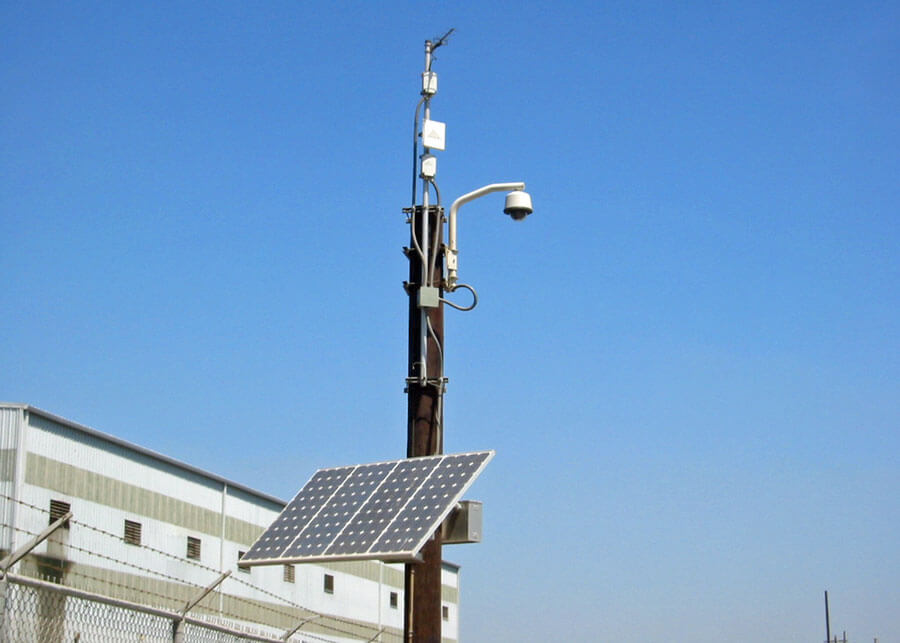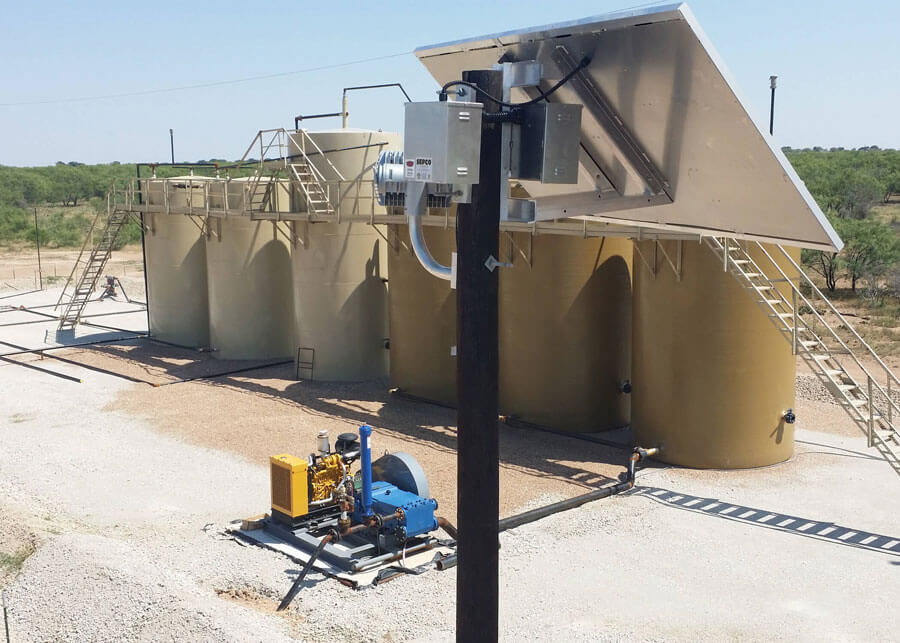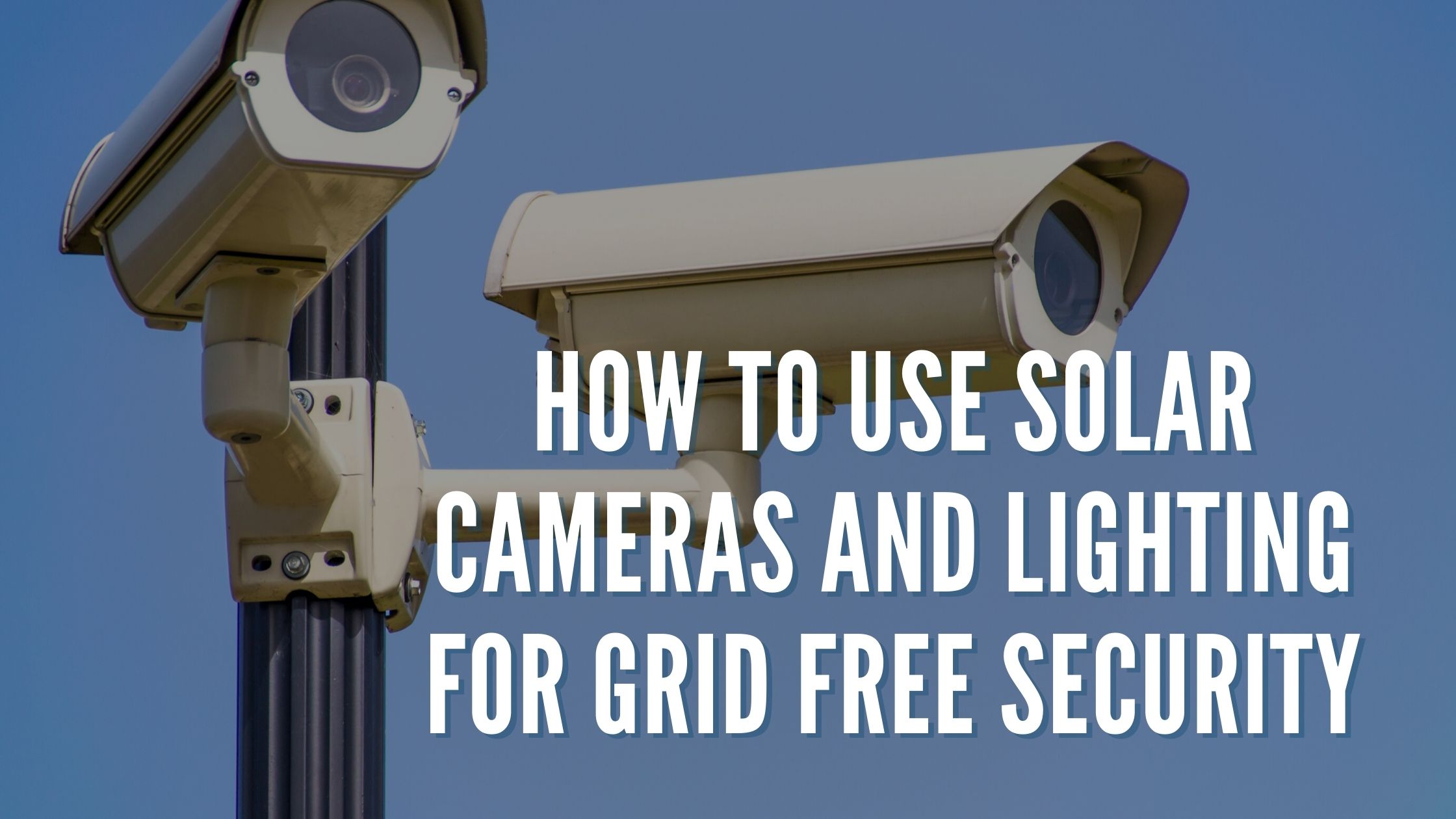Most cameras are not installed in areas that have complete access to traditional power. Instead, cameras are typically installed in remote locations where power isn’t readily available. This type of installation can make powering the cameras tricky, and a solar professional is contacted to assist with powering the devices. A stand-alone solar power solution can be the perfect choice to power the camera and other equipment used to monitor the site.
Previously, the security cameras would need to be hardwired into a monitoring station to provide real-time surveillance of the areas. However, this type of installation can be costly when trenching in the grid power can be expensive, especially when cameras and equipment are low-powered and don’t require much energy.
Now, the cameras can be outfitted with wireless technology in order to transmit the surveillance signals to the monitoring station. The wireless installation can easily be accomplished through direct radio transmission to the monitoring station or through a wireless mesh system. Often, the electrical grid is either unavailable or cost-prohibitive in such locations. Therefore, this provides the ideal opportunity to utilize stand-alone solar power.
Why Solar Power

Stand-alone solar power assemblies provide the necessary power to the cameras and wireless devices without the need for an electrical grid. The solar is charged during the day and the power is provided to the camera and equipment 24/7 through the batteries used in the system design. Systems should be designed to manage all the equipment with plenty of back-ups and the solar should recharge the batteries to full on a daily basis. These functions are all regulated by a charge/load controller that ensures proper charging of the batteries as well as load management.
Most cameras and wireless equipment come designed with a 12VDC or 24VDC input with an AC power adapter for standard electric installations. When designing the solar system, the DC power requirements are what is used for sizing the energy usage and the AC power adapters are no longer required. This creates the most efficient system. However, an array of inverters and converters are also available to produce a variety of both DC and AC voltages for some design requirements.
The solar power assemblies can be mounted high on poles to limit vandalism and other security issues. This is perfect for many installations since cameras are used in high-security areas. Having a way to ensure that the system won’t just walk off a site is an important design factor, as is the system reliability.
Adding Solar Lighting

Stand-alone solar-powered lighting is an ideal partner for a wireless security surveillance system. Some cameras are not outfitted with night vision technology and require an artificial light source during the night to provide a clear picture.
A solar lighting solution uses the same technology as the cameras to provide light from an LED fixture. This fixture can either operate all night, from dusk to dawn, or use a motion sensor to only provide light only when necessary. Operation depends on the site requirements and how active the area is during the night. Sometimes a floodlight is only used as an additional deterrent for an area.
Working with your solar provider to work up a solution is the best way to determine the power requirements. If you don’t have a camera choice when you contact the solar manufacturer, they can typically give you a list of good systems to use. Using a DC-powered camera system will be more efficient than using something that requires AC power and there are a few manufacturers that specialize in those types of systems.
By combining the technology of both the cameras, wireless equipment, and lighting, you can have a truly integrated stand-alone security surveillance system.



